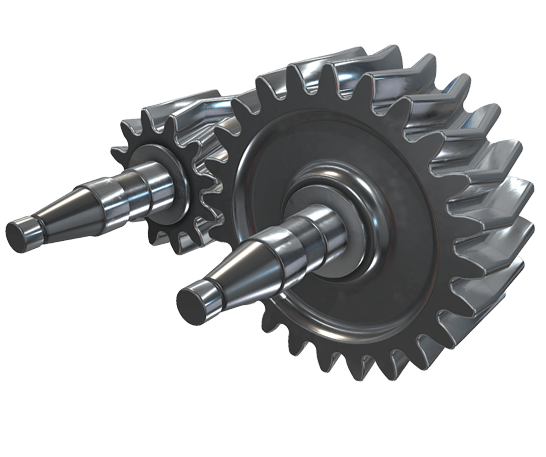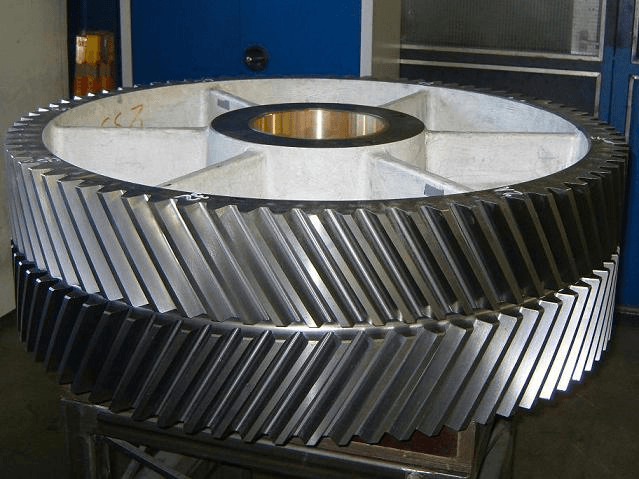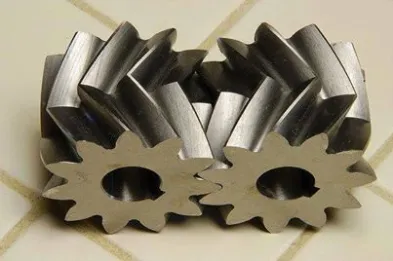Product Description
China Casting and Forging Steel /Timing/Worm/Helical/Ring/Herringbone/Screw/Rack/Bevel/Spur/Shaft/Drive/Sprocket Wheel/Spiral/Gear Ring Girth Gear for Dryer
| Material | Stainless steel, steel, iron, aluminum, gray pig iron, nodular cast iron malleable cast iron, brass, aluminium alloy |
| Process | Sand casting, die casting, investment casting, precision casting, gravity casting, lost wax casting, ect |
| Weight | Maximum 300 tons |
| Standard | According to customers’ requirements |
| Surface Roughness | Up to Ra1.6 ~ Ra6.3 |
| Heat Treatment | Anneal, quenching, normalizing, carburizing, polishing, plating, painting |
| Test report | Dimension, chemical composition, UT, MT, Mechanical Property, according to class rules |
| Port of loading | HangZhou or as customer’s required |
1.How can I get the quotation?
Please give us your drawing,quantity,weight and material of the product.
2.If you don’t have the drawing,can you make drawing for me? Yes,we are able to make the drawing of your sample duplicate
the sample.
3.When can I get the sample and your main order time? Sample time: 35-40 days after start to make mold. Order time: 35-40 days,
the accurate time depends on product.
4.What is your payment method? Tooling:100% T/T advanced Order time:50% deposit,50%to be paid before shipment.
5.Which kind of file format you can read? PDF, IGS, DWG, STEP, MAX
6.What is your surface treatment? Including: powder coating, sand blasting, painting, polishing, acid pickling, anodizing, enamel, zinc plating, hot-dip galvanizing, chrome plating.
7.What is your way of packing? Normally we pack goods according to customers’ requirements.
| Application: | Machinery |
|---|---|
| Hardness: | Hardened Tooth Surface |
| Gear Position: | External Gear |
| Manufacturing Method: | Cast Gear |
| Toothed Portion Shape: | Spur Gear |
| Material: | Cast Steel |
| Customization: |
Available
| Customized Request |
|---|

How do you choose the right size herringbone gear for your application?
Choosing the right size herringbone gear for your application involves considering several factors and performing engineering calculations. Here’s a detailed explanation of the steps involved in selecting the appropriate size herringbone gear:
- Determine the Application Requirements: Start by understanding the specific requirements of your application. Consider factors such as the input and output speeds, torque loads, power requirements, duty cycle, and operating conditions. Determine the desired service life, efficiency, and reliability expectations for the gear system.
- Calculate the Gear Ratios: Determine the required gear ratios based on the speed and torque requirements of your application. Gear ratios define the relationship between the rotational speeds and torques of the input and output shafts. Select appropriate gear ratios that fulfill the desired performance objectives.
- Calculate the Load and Torque: Estimate the maximum load and torque that the herringbone gear will experience during operation. Consider both static and dynamic loads, shock loads, and any potential overload conditions. Calculate the required torque capacity of the gear system based on these load considerations.
- Consider the Size and Space Constraints: Evaluate the available space and size constraints in your application. Measure the available distance for gear installation, including the gear’s diameter, width, and axial length. Consider any restrictions on the gear’s physical dimensions and ensure that the selected gear size fits within the available space.
- Determine the Gear Module: The gear module is a parameter that defines the size and number of gear teeth. Calculate the gear module based on the desired gear ratios, torque capacity, and available space. The gear module is typically determined by considering a balance between gear tooth strength, contact ratio, and manufacturing feasibility.
- Perform Gear Design Calculations: Utilize standard gear design formulas and calculations to determine the required number of gear teeth, pitch diameter, helix angles, and other gear dimensions. Consider factors such as gear tooth strength, contact ratio, tooth profile optimization, and gear manufacturing standards. These calculations ensure that the selected gear size can handle the anticipated loads and provide reliable performance.
- Consult Manufacturers and Standards: Consult gear manufacturers, industry standards, and guidelines to ensure compliance with best practices and safety requirements. Manufacturers can provide technical expertise, recommend suitable gear sizes, and offer guidance on material selection, heat treatment processes, and gear quality standards.
- Consider Cost and Availability: Evaluate the cost implications and availability of the selected gear size. Consider factors such as material costs, manufacturing complexity, lead times, and the overall economic feasibility of the gear system. Balance the desired performance with cost considerations to arrive at an optimal gear size.
It’s important to note that selecting the right size herringbone gear requires expertise in gear design and engineering. If you lack the necessary knowledge, it is advisable to consult with experienced gear engineers or manufacturers who can assist in the selection process.
In summary, choosing the right size herringbone gear involves determining the application requirements, calculating gear ratios and torque loads, considering size constraints, determining the gear module, performing gear design calculations, consulting manufacturers and standards, and considering cost and availability. Following these steps ensures that the selected herringbone gear size meets the specific needs of your application and provides reliable and efficient operation.

Can you provide examples of machinery that use herringbone gears?
Herringbone gears are widely used in various machinery and mechanical systems that require high torque transmission, smooth operation, and reduced noise levels. Here are some examples of machinery and applications where herringbone gears are commonly employed:
- Marine Propulsion Systems: Herringbone gears are commonly found in marine propulsion systems, including ship engines and marine gearboxes. They are used to transmit power from the engine to the propeller shaft, providing efficient torque transfer and smooth operation in marine vessels.
- Mining Equipment: Herringbone gears are used in heavy-duty mining equipment, such as crushers, conveyors, and excavators. These gears can handle high loads and provide reliable power transmission in demanding mining operations.
- Turbines and Power Generation: Herringbone gears are utilized in various power generation applications, including steam turbines and hydroelectric generators. They help transmit torque from the turbine or generator shaft to other components, such as the gearbox or electrical generator, ensuring efficient power generation.
- Rotating Kilns and Dryers: Herringbone gears are commonly employed in rotating kilns and dryers used in industries such as cement manufacturing and chemical processing. These gears facilitate the rotation of the kiln or dryer, ensuring proper heat distribution and material processing.
- Metal Rolling Mills: Herringbone gears are utilized in metal rolling mills to transmit power from the motor to the rollers. They enable precise and synchronized movement of the rolls, allowing for the shaping and forming of metal sheets or bars in the rolling process.
- Paper and Pulp Industry: Herringbone gears are used in machinery and equipment involved in the paper and pulp industry, such as paper machines, pulpers, and digesters. These gears facilitate the movement of various components, including rollers and conveyors, ensuring smooth and efficient paper production processes.
- Textile Machinery: Herringbone gears find applications in textile machinery, including spinning machines, weaving looms, and knitting machines. They assist in the movement and synchronization of various components, such as spindles, shuttles, and fabric feeders, enabling precise and efficient textile production.
- Machine Tools: Herringbone gears are utilized in machine tools, such as gear hobbing machines, milling machines, and lathes. These gears help transmit power from the motor to the tooling components, allowing for precise and controlled machining operations.
These examples represent just a few of the many applications where herringbone gears are employed. Herringbone gears are valued for their ability to handle high loads, provide smooth operation, and reduce noise levels, making them suitable for a wide range of machinery and mechanical systems.

Can you explain the unique shape of herringbone gear teeth?
The unique shape of herringbone gear teeth is a defining characteristic of herringbone gears, also known as double helical gears. Here’s a detailed explanation of the unique shape of herringbone gear teeth:
Herringbone gears have a V-shaped or herringbone-shaped tooth profile, which is formed by two helical gear sections that are mirror images of each other. This tooth profile is distinct from the straight or helical tooth profiles found in other types of gears such as spur gears or helical gears.
When viewed from the end, the teeth of a herringbone gear resemble the letter “V”. This shape is created by the combination of two opposing helix angles, one on each side of the gear. The helix angle refers to the angle at which the teeth are inclined relative to the gear’s axis.
In a herringbone gear, the helix angle of one helical section is opposite in direction to the helix angle of the other helical section. This means that as the gear rotates, the teeth on one side lean in one direction, while the teeth on the other side lean in the opposite direction.
The opposing helix angles of the two gear sections in herringbone gears serve several important purposes:
- Axial Thrust Elimination: One of the main advantages of the herringbone gear design is the elimination of axial thrust or end thrust forces. In helical gears, the helix angle of the teeth generates an axial force along the gear’s axis during rotation. However, in herringbone gears, the opposing helix angles cancel out these axial forces, resulting in a balanced gear that does not experience significant axial movement or require thrust bearings.
- Smooth Engagement: The opposing helix angles of herringbone gears facilitate smooth and gradual tooth engagement. As the gear rotates, the teeth on one side gradually come into contact with the teeth on the other side. This gradual meshing reduces sliding friction, minimizes backlash, and ensures a continuous and smooth transfer of power between the gear sections.
- Increased Load Capacity: The V-shaped tooth profile of herringbone gears provides increased tooth contact area compared to gears with straight or helical teeth. This increased contact area improves load distribution and allows herringbone gears to handle higher torque loads, resulting in an increased load-carrying capacity.
The unique shape of herringbone gear teeth requires precise manufacturing techniques to ensure proper meshing and alignment of the gear sections. The teeth must be accurately machined to achieve the correct helix angles and tooth profiles, ensuring smooth operation and efficient power transmission.
In summary, the unique shape of herringbone gear teeth, with their V-shaped or herringbone-shaped profile formed by opposing helix angles, enables axial thrust elimination, smooth engagement, and increased load capacity. These characteristics make herringbone gears well-suited for applications where efficient torque transmission, balanced operation, and high load-carrying capacity are essential.


editor by CX 2023-09-04